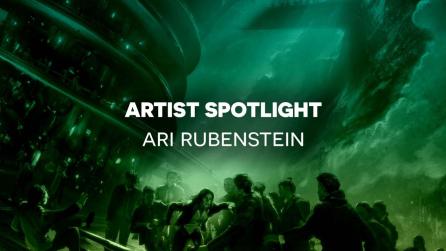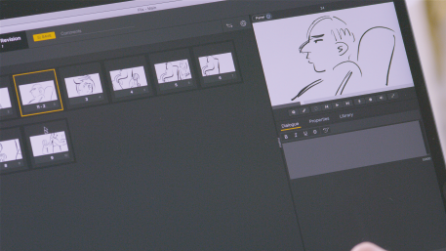Making myth real: breathing light into White Snake
How Beijing-based Light Chaser Animation used Katana to bring a beautiful Chinese legend to life
In 2019, Beijing-based studio Light Chaser Animation (LCA) released their fourth film, White Snake, to unqualified praise and general consensus that it was their most visually compelling and beautifully designed film to date.
It doesn't take more than a glance at the movie’s marketing material to make the above ring true. A new take on a classic Chinese legend, White Snake tells the story of Bianca and Xuan—two lovers caught in a compelling tale of mythical monsters, supernatural forces, and trickster demons—all of which inspire awesome imagery from the outset.
Yet it’s not just the film’s subject matter which promises something so visually arresting. Founded in 2013 by Gary Wang, LCA’s prowess for making beautiful animation has been honed over the course of seven years, and across three previous feature films.
The studio has used each successive release as a stepping stone toward building a great team and a solid production pipeline, with Foundry tools proving essential in supporting this growth, having been utilized on each project. Happily, White Snake’s commercial and critical success serve as an example of where LCA’s diligence and patience paid off—but the production cycle was not without its challenges, as Jerry Kong, Pipeline TD Lead, tells us.
“As audiences have higher and higher requirements for the quality of animated films, we have to ensure that the picture quality can be steadily improved in the same production cycle, which is a great test for the production efficiency and technical strength of animation companies.”
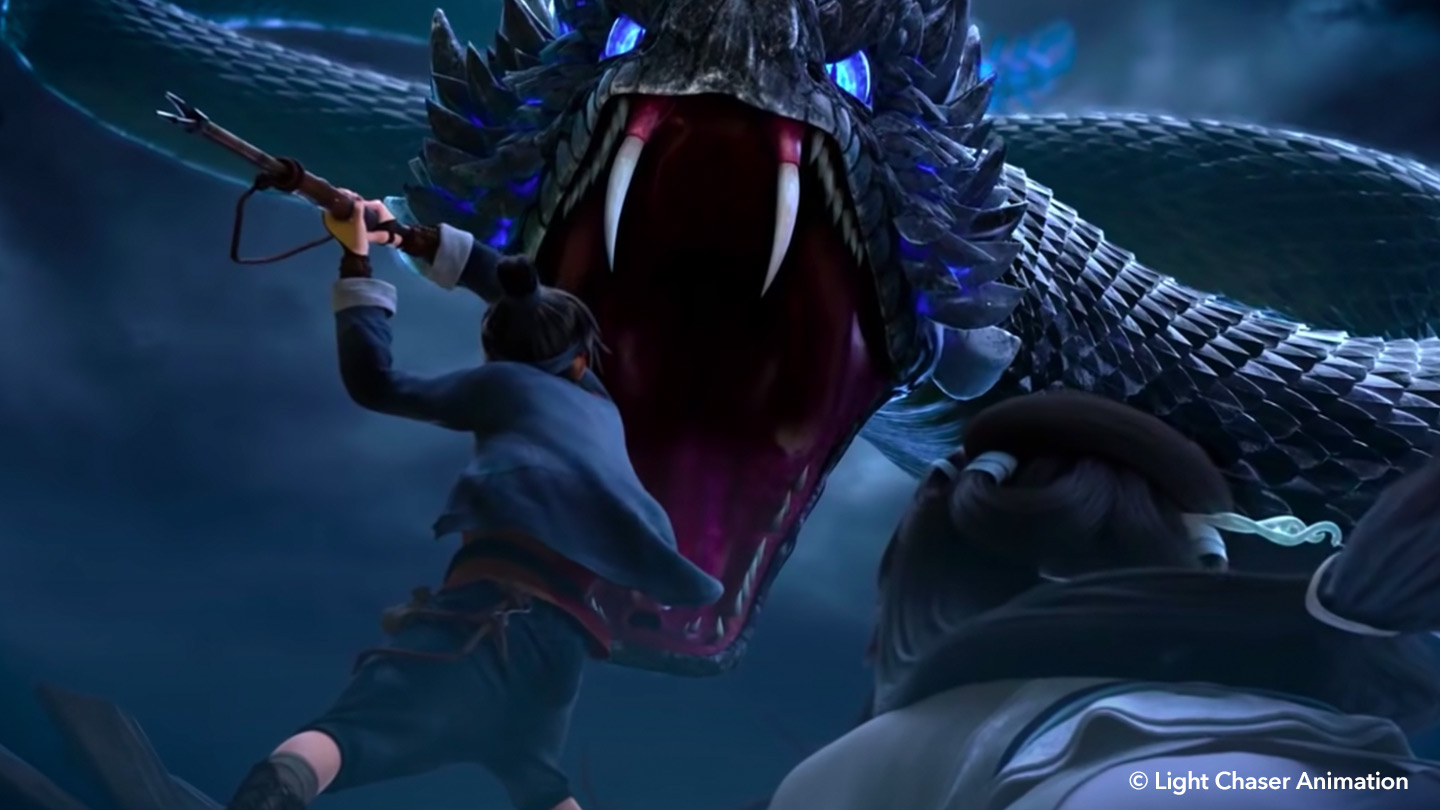
Speaking of the studio’s first commercial release, 2016’s Little Door God, Jerry continues: “Every film presents a new challenge. The challenge of Little Door God was to build a production line of animated films from zero, while the challenge of White Snake is more about improving the picture quality and ensuring production efficiency at the same time as the production of complex vegetation environments, lots of special effects and rendering processes.”
To help LCA navigate these hurdles, Foundry’s lighting tool Katana has remained a constant for the studio throughout the past six years. Its capabilities for complexity management, volume production and unbridled collaboration have helped the studio work faster to meet rising quality and audience demands, against tighter budgets and deadlines—a common challenge faced by most modern studios. White Snake, as perhaps LCA’s most ambitious, awe-inspiring project to date, had a hard ask of its creators—yet Katana’s formidable power and speed were on hand to support the team throughout the production process.
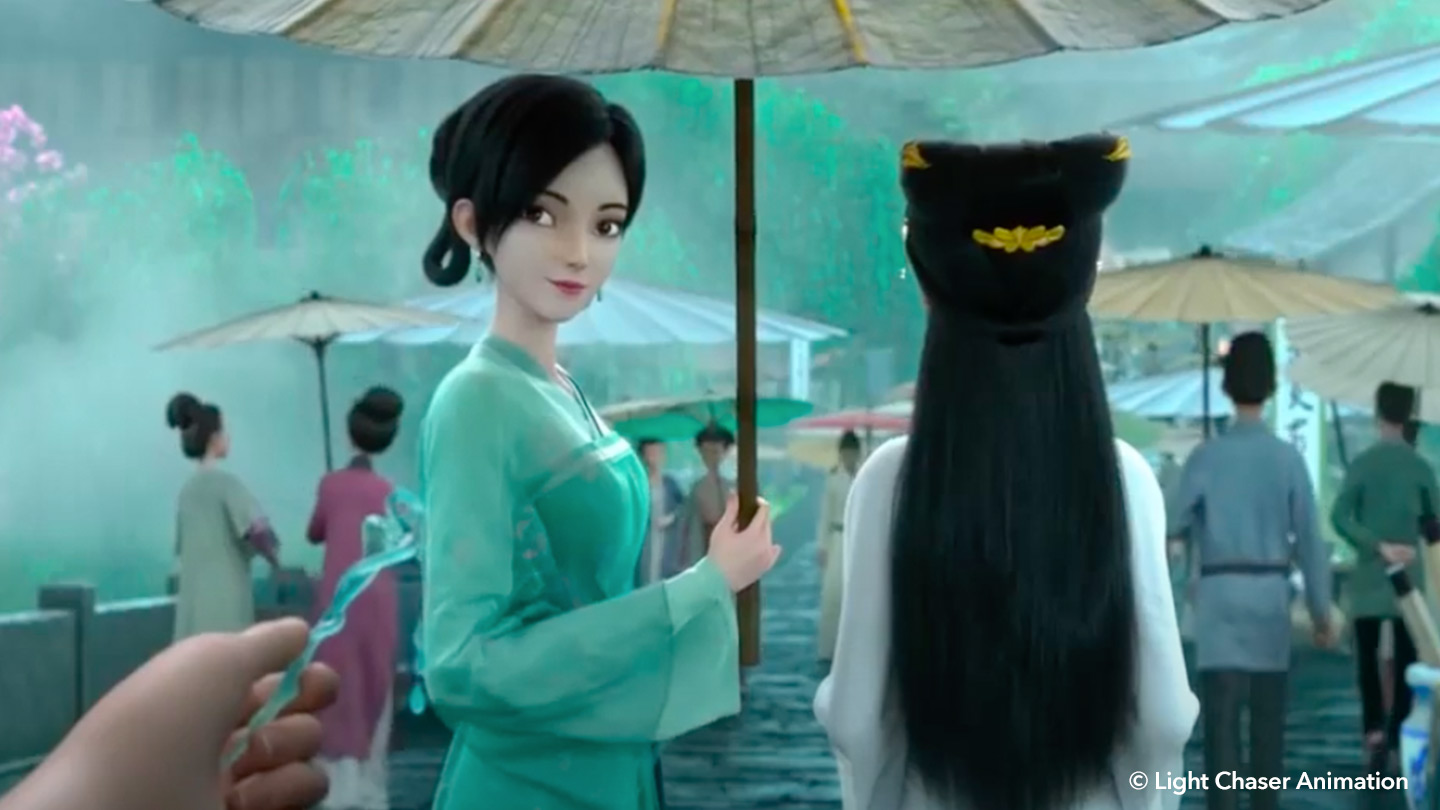
Lighting a legend
Having joined the Pipeline TD department of LCA at the end of 2013, Jerry Kong has worked on every one of the studio’s releases, improving the automation and industrialization of the production pipeline with each iteration. As vanguard for the team in building and maintaining the Katana pipeline, Jerry’s well placed to offer expert insight into how exactly Katana fits into LCA’s production workflows.
“Katana is used to do look development and lighting in our pipeline,” he offers. “It allows our animation data to flow through the pipeline in a reasonable way and eventually be aggregated to the lighting team, so as to facilitate the management of upstream data and enable the lighting artists to focus on artistic work.”
This same sentiment—freeing up artists’ time, so they can spend it creating something incredible—is an intrinsic part of Katana’s DNA and stands as a cornerstone of its ongoing product development, so we were delighted to learn that this came to fruition for LCA—especially amidst White Snake’s tight production schedule.
“The lighting [on White Snake] was completed at the end of October 2018, and the production cycle is not much different from our previous animated films, maintaining the pace of one movie a year,” Jerry tells us.
A structured and familiar production cycle, then. But where the creation of White Snake differed from LCA’s previous releases was through the increased use of Arbitrary Output Variables (AOVs), making for a completely unique experience for the studio: ““For light rendering, all of our lenses output light layers so that lighting artists have more space to adjust.”
Getting granular, Jerry continues: “When we encountered a large number of special effects shots, we concentrated on making the special effects rig first, and then applied it to other related shots in batches. As for the final look, the director made a balance between 3D and Chinese freehand brushwork. In order to have enough space to adjust, we divided the lighting rendering stage into more layers than before, and the whole film was rendered using the lighting AOVs for the first time.”
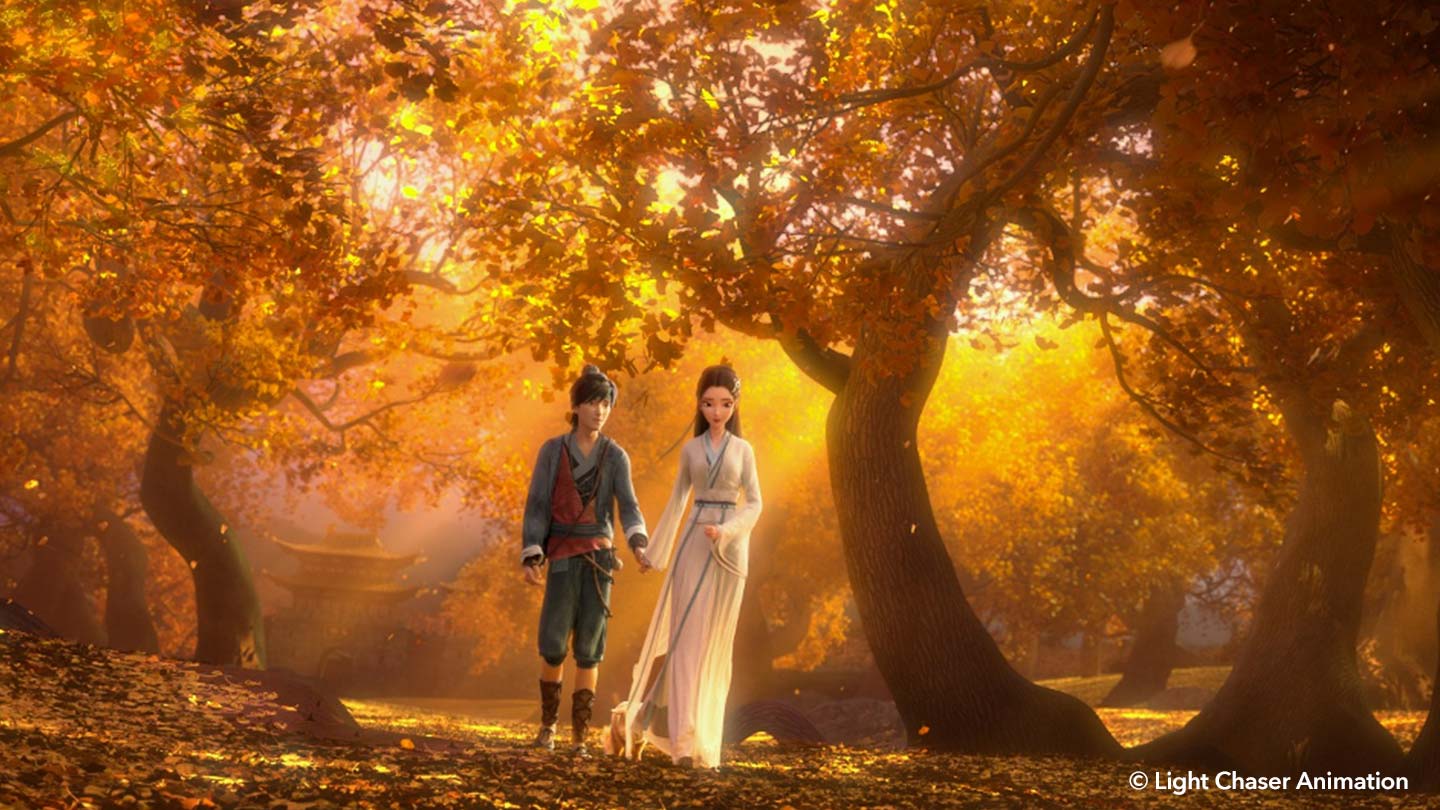
Fortunately, Katana proved well-placed to help manage the added render output complexity this brought to production. “We heavily used Katana's instancing data passed to the renderer via KtoA [Arnold for Katana]. Katana's proxy display mode also facilitated lighting artists to operate the scene.”
Speaking of Katana’s individual features and nodes, Jerry had a few firm favourites that helped the LCA team save time in the creation of White Snake: “Katana's OpScript node is very convenient, allowing us to easily modify object properties or create new objects,” he comments. “Convenient node packaging tools such as Macro and SuperTool help me to encapsulate complex functionality into easy-to-use nodes. Using nodes to build templates and handle large scenes is very stable, and it’s easy to manage and modify asset data.”

The right tools for the job
But Katana wasn’t the only key player in this production. Foundry tools Mari and Nuke also supported the team’s look development and shot production efforts, pairing perfectly with Foundry’s own mission to facilitate seamless creative collaboration across teams.
“Mari’s textures can seamlessly enter Katana and keep the same effect, which is very convenient,” Jerry comments. Speaking of Nuke, he adds: “Under Katana we have standard render output settings, and Nuke can also import these render sequences with one click, allowing artists to iterate quickly under these standards.”
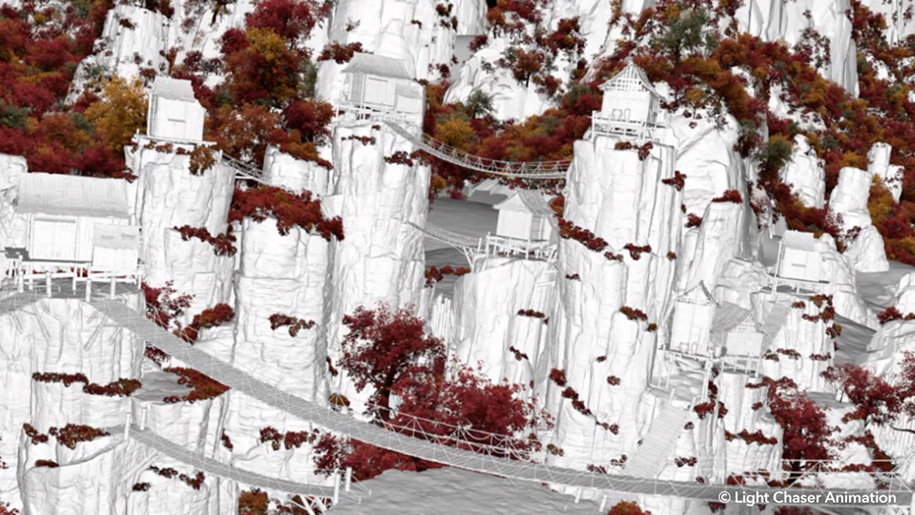
With speed and efficiency clearly being a main focus for LCA, it makes sense that other factors come into play for the studio when building their pipeline. As one of our five look development and lighting trends to watch our for in 2020, we couldn’t help but ask if Jerry and his team had started to investigate Universal Scene Description (USD) as part of this.
“Yes, we are studying and testing USD,” Jerry tells us. “It’s very flexible and it will be easier to use it to deal with the data of various departments. However, we’ve found that the support of commercial software for USD lags behind to different degrees, which brings a lot of resistance to its promotion and use.”
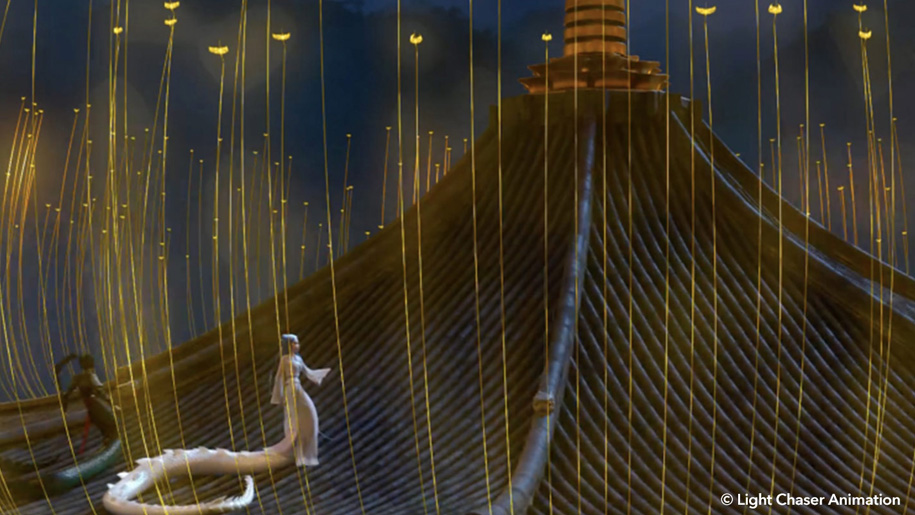
Empowering a new generation
Katana’s longevity and provenance with Light Chaser Animation Studios is testament to how effective the studio finds it as part of their pipeline—yet it also raises a new avenue of discussion. As the first company in China to deploy Katana, LCA has unique insight into the nuances of hiring and training lighters, as Jerry outlines below:
“When we started to build the prototype pipeline, we studied the whole process of various companies and the usage of lighting systems in the process, including Sony and their use of Katana in the lighting process.
Comparative studies were then conducted to establish the use of Katana in the various lighting processes. Firstly, senior production staff studied and researched with technical directors (TD) to figure out a set of methods before summarizing them into learning materials and tutorials for new employees to learn. These same TDs used development tools to package complex processes into simpler tools that allowed newcomers to get started quickly.”
Said newcomers clearly have an exciting career ahead of them, one marked by passion and creativity, to which Jerry stands as a shining example. Asked about his favourite aspect of digital cinematography when working on animated films, he tells us: “We can create a convincing world that doesn’t exist at all and move the audiences through the story. For technicians, it's exciting to be able to use programs and math to solve problems, improve artists' efficiency, and upgrade picture quality.”
We couldn’t agree more.
